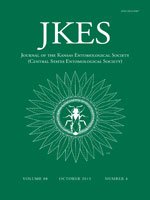Bumble bees (Bombus Latreille) provide indispensable ecosystem services for natural and agricultural systems by increasing crop yield and quality. With documented bumble bee declines throughout the world, the need for baseline data on these important insects becomes apparent. The bumble bees of Oklahoma have previously not been surveyed, hampering assessment of temporal change. The objectives of this study were to determine the past and present bumble bee species richness of Oklahoma and indicate possible temporal trends. Records were gathered from museum and university collections, as well as from a field survey of 46 sites in 21 counties. Historical records indicated ten bumble bee species in Oklahoma, four of which had fewer than ten total records. Only five species have been recorded since 2000, four being found in the targeted survey: B. pensylvanicus (DeGeer), B. griseocollis (DeGeer), B. fraternus (Smith) and B. impatiens (Cresson). The American bumble bee (B. pensylvanicus) has been, and continues to be, the most common bumble bee species in Oklahoma, despite showing clear patterns of decline in other regions of North America. Our results parallel several recent studies that failed to locate extant populations of the variable cuckoo bee, Bombus variabilis (Cresson), supporting possible extirpation in portions of its North American range. A targeted survey for this species is warranted, as its host, B. pensylvanicus, remains common in Oklahoma.
How to translate text using browser tools
1 January 2015
Bumble Bees (Hymenoptera: Apidae) of Oklahoma: Past and Present Biodiversity
Laura L. Figueroa,
Elizabeth A. Bergey
ACCESS THE FULL ARTICLE
bee conservation
Bombus
Entomological collections
Pollinator decline
regional fauna





